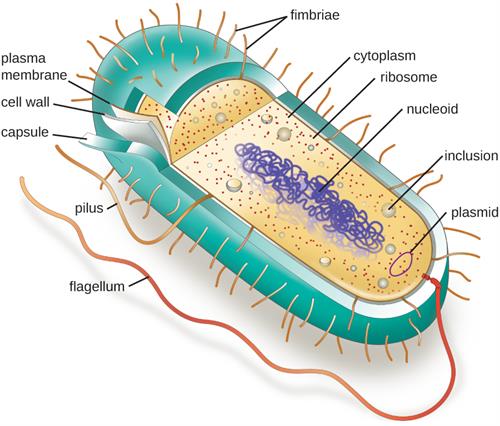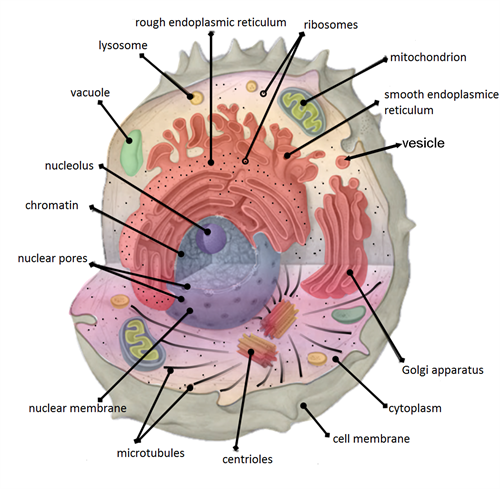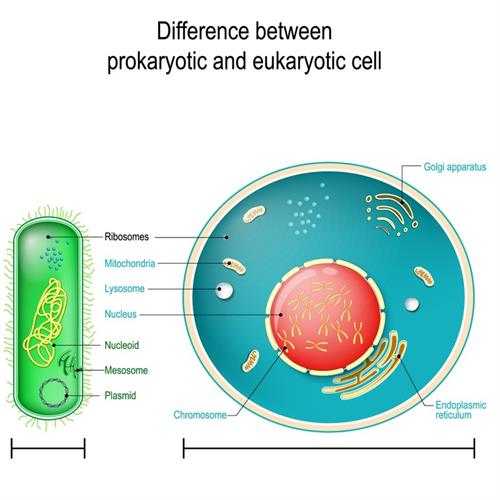PDF chapter test TRY NOW
Prokaryotic cell
Prokaryotic cells do not have a nucleus surrounded by a complex nuclear membrane, where single, circular chromosome situated in a nucleoid. (Pro: primitive; Karyon: nucleus).

Prokaryotic cell - Bacteria
Eukaryotic cell
Eukaryotic cells have a nuclear membrane that surrounds the nucleus where the well defined rod-shaped chromosome are present. (Eu: True or well; Karyon: nucleus). Eukaryotic cells are further classified into plant cell and animal cell.

Eukaryotic cell - Animal cell
Comparison between prokaryotic cell and eukaryotic cell

Prokaryotic cell | Eukaryotic cell |
Size of a prokaryotic cell ranges from \(0.1 µm\) to \(5 µm\). | Size of a eukaryotic cell ranges from \(5 µm\) to \(100 µm\). |
Membrane-bound nucleus absent. | Membrane-bound nucleus present. |
It is unicellular. | It is multicellular. |
Lysosomes and Peroxisomes are absent. | Lysosomes and Peroxisomes are present. |
Microtubule absent. | Microtubule present. |
Endoplasmic reticulum absent. | Endoplasmic reticulum present. |
Mitochondria absent. | Mitochondria present. |
\(70S\) Ribosomes are present. | \(80S\) Ribosomes are present. |
Golgi apparatus absent. | Golgi apparatus present. |
Vacuoles absent. | Vacuoles present. |
Chloroplast absent. | Chloroplast present in plants. |
A single chromosome is present. | More than one chromosome is present. |
Example: Bacteria, Archaea. | Examples: Plants, Animals, Fungi, Protists. |
Reference:
https://commons.wikimedia.org/wiki/File:OSC_Microbio_03_03_ProkCell.jpg
https://upload.wikimedia.org/wikipedia/commons/4/4b/Cell-organelles-labeled.png
